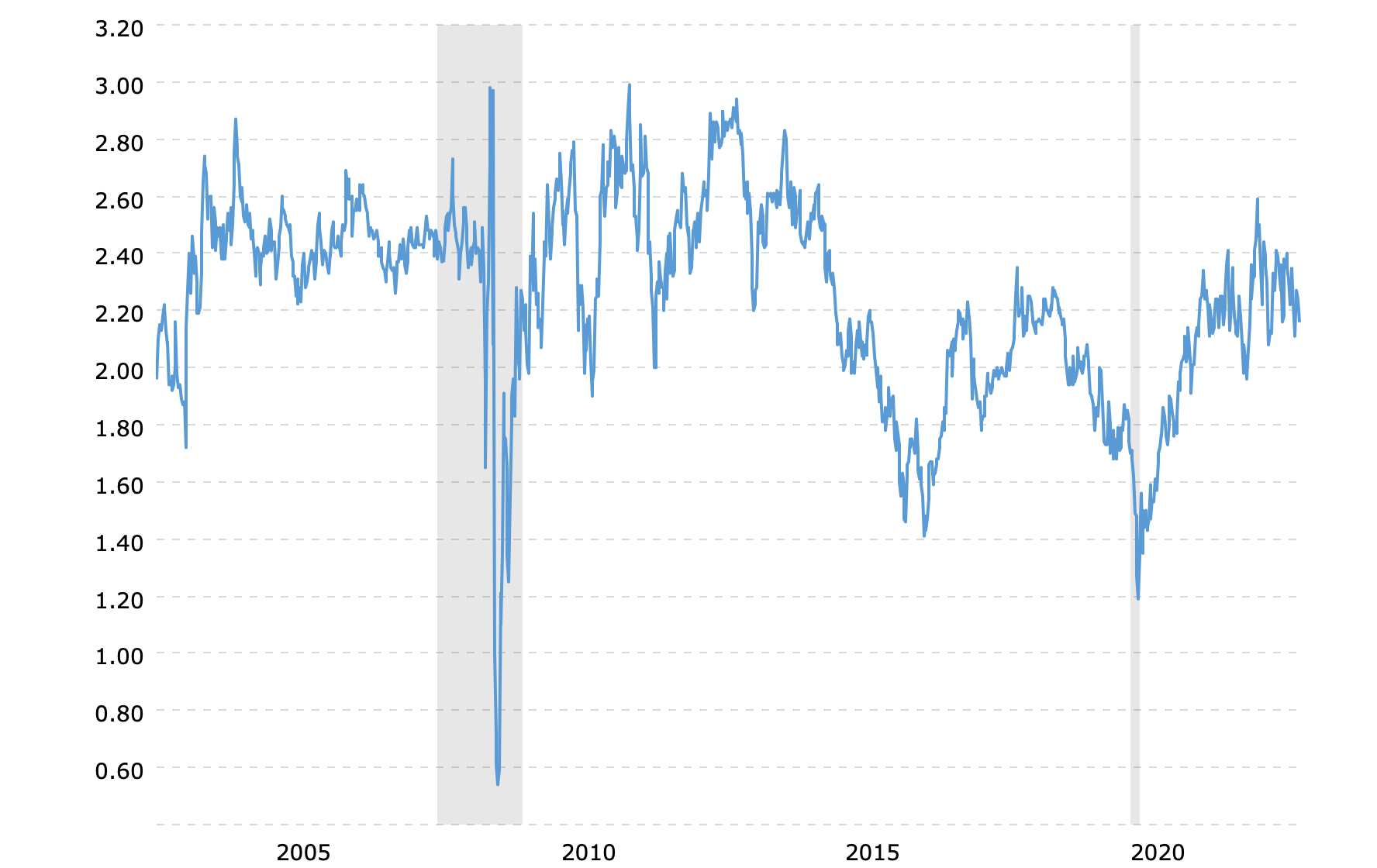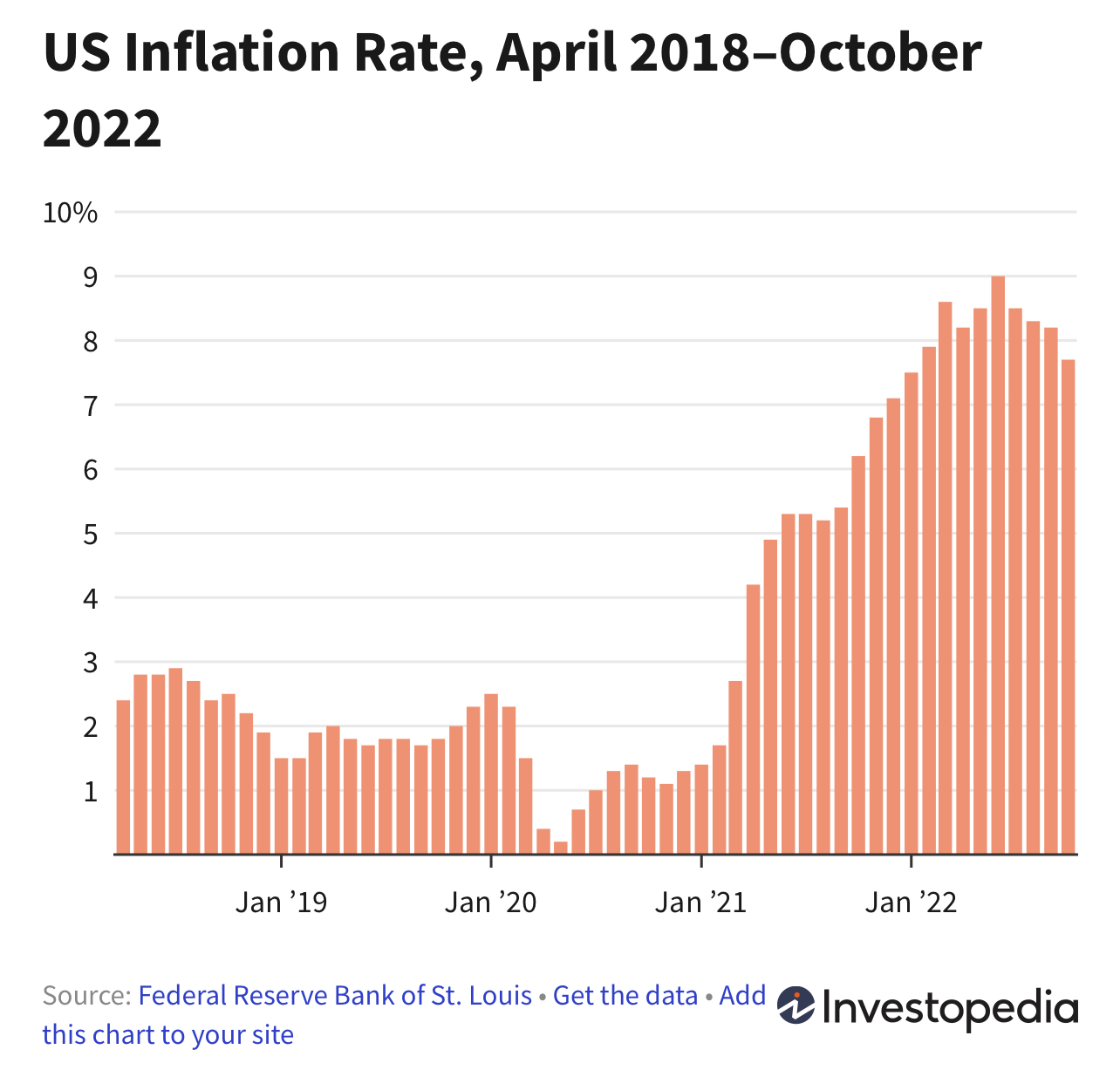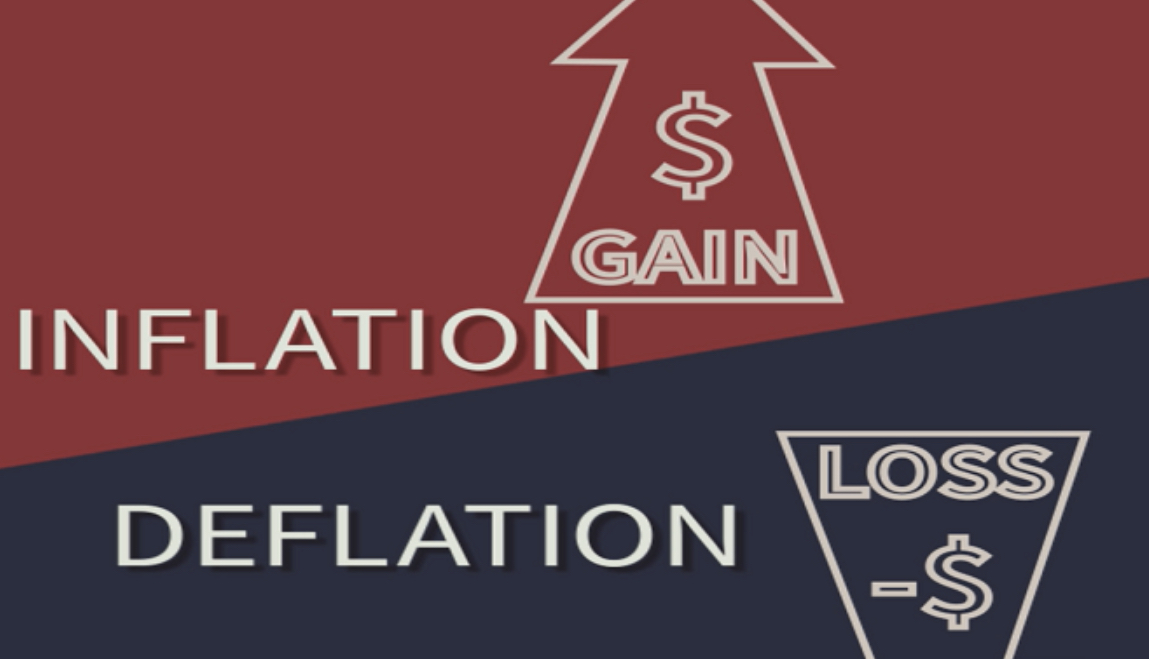Inflation and deflation are:
- Two opposing economic forces that affect the value of money.
- Prices of goods.
- The economy as a whole.
Understanding the critical differences between these two concepts is crucial for investors, savers, and individuals who want to protect their wealth. This article aims to explain the difference between Inflation and deflation, their impact on different groups of people, and how to safeguard yourself from their effects.
What is Inflation?
Inflation is a sustained increase in the general price of goods and services in an economy over time. This increase in prices reduces the purchasing power of money, making it less valuable over time. Inflation is a normal part of an economy and is usually caused by several factors, such as an increase in the money supply, rising demand for goods and services, and increasing production costs.

Inflation can have both positive and negative effects on the economy. On the one hand, Inflation stimulates economic growth by increasing the demand for goods and services. However, on the other hand, Inflation can lead to a decline in the purchasing power of consumers and a decrease in the value of savings. In addition, Inflation can lead to an increase in interest rates, which makes it more expensive for consumers and businesses to borrow money.
What is Deflation?
Deflation is a sustained decrease in the general price level of goods and services in an economy over time. This price decrease increases money’s purchasing power, making it more valuable over time. Deflation is often a sign of a weak economy and is caused by several factors, such as a decrease in the money supply, declining demand for goods and services, and falling production costs.
Deflation can have both positive and negative effects on the economy. On the one hand, deflation can lead to lower prices, making it easier for consumers to purchase goods and services. On the other hand, deflation can lead to a decline in economic activity as consumers delay purchases, expecting prices to fall further. Deflation can also lead to a decrease in the value of debt, making it more difficult for businesses and consumers to repay loans.
Key Differences Between Inflation vs. Deflation
Inflation and deflation are opposite forces in the economy that determine the value of money. Inflation refers to a rise in the general price level of goods and services over time, leading to a decrease in the purchasing power of money. Deflation, on the other hand, is a decrease in the general price level of goods and services, leading to an increase in the purchasing power of money.
Inflation is measured by the Consumer Price Index (CPI), which tracks the prices of a basket of goods and services that a typical consumer buys. If the CPI rises over time, prices increase, and therefore, the value of money has decreased. The Federal Reserve Bank uses the CPI to monitor Inflation and adjust its monetary policy accordingly.

Deflation is calculated similarly to Inflation, but it measures a decrease in prices. The opposite of Inflation, deflation can signify a weak economy and declining demand for goods and services. When prices fall, consumers may delay purchases, expecting prices to fall further, leading to a decrease in economic activity.
Who has benefited the most from deflation?
Deflation benefits those who hold cash or savings as the value of their money increases. Savers, who are not spending their money, benefit from deflation as the purchasing power of their savings increases. In addition, consumers who purchase goods and services at lower prices also benefit from deflation.
However, deflation can have a negative impact on those who hold debt, such as businesses and consumers. As the value of debt increases, it becomes more difficult to repay loans, leading to defaults and financial difficulties. Deflation can also lead to a decrease in economic activity, as consumers delay purchases, expecting prices to fall further, reducing demand for goods and services and lowering economic growth.
Who has benefited the most from Inflation?
Inflation benefits those who borrow money as the value of debt decreases over time. For example, if a business borrows money at an interest rate of 5% and the inflation rate is 3%, the real interest rate, after considering inflation, is only 2%. This means that the business can repay its debt with money worth less than when it was borrowed, making it easier to repay the loan.
In addition, Inflation can benefit those who own assets, such as stocks and real estate, as the prices of these assets tend to increase with Inflation. This is because Inflation increases the cost of goods and services, leading to higher profits for companies, which can result in higher stock prices.
How to Safeguard Yourself From Inflation or Deflation
To protect yourself from the effects of Inflation and deflation, it is essential to diversify your investments and to keep a portion of your savings in cash or near-cash investments, such as money market funds. In addition, investing in assets that are likely to increase in value with Inflation, such as stocks and real estate, can help to offset the effects of Inflation on your wealth.
Another strategy is to invest in inflation-protected securities, such as Treasury Inflation-Protected Securities (TIPS), which are bonds linked to the Consumer Price Index (CPI) and provide a real return adjusted for Inflation.
Finally, it is essential to maintain a healthy financial situation by reducing debt and increasing savings, as this will help you be better prepared for any economic conditions, whether inflationary or deflationary.
Conclusion
Inflation and deflation are two opposing economic forces that significantly impact the value of money and the economy as a whole. Understanding the critical differences between Inflation and deflation and their effects on different groups of people is crucial for investors, savers, and individuals who want to protect their wealth. By diversifying your investments, investing in assets that increase in value with Inflation, and maintaining a healthy financial situation, you can safeguard yourself from the effects of Inflation and deflation.
Inflation today differs from historical inflation in terms of the level and causes of inflation, as well as the way central banks handle inflation. While high and volatile inflation rates have characterized historical Inflation, Inflation today is generally considered moderate and stable. Additionally, while historical inflation was often caused by external factors such as war or natural disasters, today’s inflation is caused by more structural elements such as monetary policy and changes in demand and supply. Furthermore, central banks today have more tools to handle inflation and stabilize the economy compared to the past.
If you’re interested in learning more about gold IRAs and how they may fit into your overall financial plan, contact American Bullion today at 1-800-465-3472. We can provide the information and resources you need to make an informed decision about your future
The post What is the Difference Between Inflation and Deflation? first appeared on American Bullion.Original post here: What is the Difference Between Inflation and Deflation?

No comments:
Post a Comment